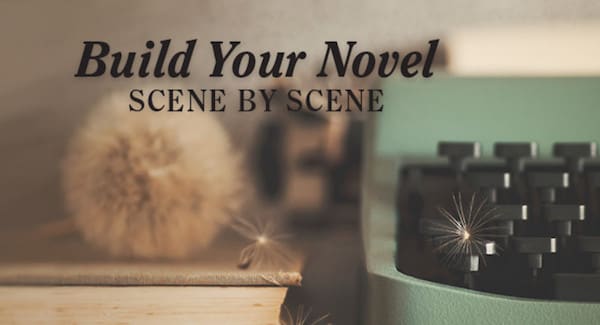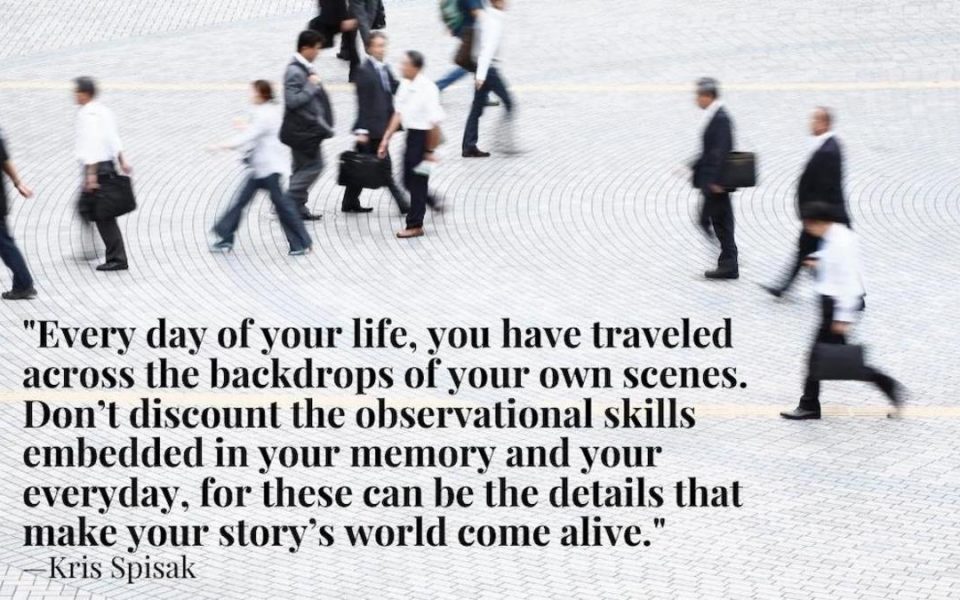Mastering Vivid Descriptions: Draw Upon the Backdrops of Your Life to Reimagine Your Descriptions
Without a sense of place, your dialogue exists on a black movie screen. Without a backdrop, your characters and their actions are floating in space. Without specific details, that setting of yours can pass beyond the familiar and into the territory of cliché.
(The Four Doorways Into Story and How to Use Them to Create a Bestselling Novel)
But you can be better than that. You already have all the tools you need to be a maestro of settings. Give yourself credit, writer. You’ve lived a life. You’ve seen some things—and more important to this conversation, you’ve seen some places.
Every day of your life, you have traveled across the backdrops of your own scenes. Don’t discount the observational skills embedded in your memory and your everyday, for these can be the details that make your story’s world come alive.
Yes, many writers have set scenes in a coffee shop, on a beach, along a walking trail in the woods, and countless other settings; however, no matter the locale, it can be uniquely your own if you lean in toward your known backdrops.
A description-writing challenge:
- Think about a fictional bedroom. Write down five details about that bedroom. Any writer can proceed from here, right? But the problem comes when the details captured are the same basics so many others might name. A wall color. A covering on the floor. A bed. Maybe a dresser. (Remember, listing a bunch of bland objects doesn’t create a vivid place!)
But let’s try this again.
- Think about where you slept as a child. Write down five details about that space, five details unique to only that place in that time. Something upon the desk? A mark or dent on the wall? A distinctive picture or art piece? A nostalgic item tucked amid the detritus of schoolwork and not yet put away laundry? (Whatever you come up with is likely far more special and thus more fascinating than the first imaginary bedroom of this exercise. Look at you, nailing it with your description skills. You’ve had it inside of you all along.)
Of course, setting is far more than the visual.
- Think about a favorite song or artist and a moment that specific music swept around you. The feel of the rhythm on your skin. The instruments. The voice(s). The surrounding crowd or lack thereof.
- Think about a favorite meal you’ve experienced and all of the tastes and smells that went along with it. What was on the table? On the stove? In the air?
Sometimes, as we write, we know what we want to accomplish, yet the words that emerge are not as powerful as they could be because they mimic what readers have read countless times before. That coffee shop, that beach, that walking trail. There’s nothing wrong with any location. It’s only wrong if it’s blank, vague, or somebody else’s version instead of your own. But you have so many specifics that you can pull from within your own life. It’s not stealing when you’re borrowing from your own lived experiences. Your memories can be your best inspirations.
You don’t have to be a world traveler or a scenery painter to notice the backdrops of your life’s scenes. Every moment takes place somewhere. It’s true in a book. It’s true in a life.
Every set designer needs inspiration. Why not pull elements of your story’s settings from the particulars that you have seen, heard, smelled, felt, tasted, and lived? Whether writing fiction or nonfiction, snippets of reality can make everything ring true.

If you want to learn how to write a story, but aren’t quite ready yet to hunker down and write 10,000 words or so a week, this is the course for you. Build Your Novel Scene by Scene will offer you the impetus, the guidance, the support, and the deadline you need to finally stop talking, start writing, and, ultimately, complete that novel you always said you wanted to write.


